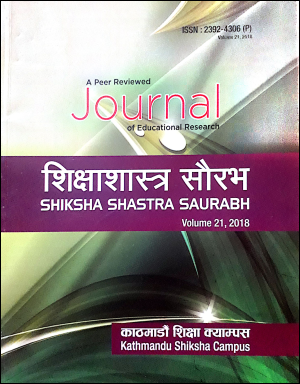Internal Displaced Persons (IDPs): A Case Study of Western Nepal
DOI:
https://doi.org/10.3126/sss.v21i0.35090Keywords:
Insurgency, displacement, vulnerabilities, conflict, human rightsAbstract
In Nepal, the number of IDPs appeared to have increased mainly due to the decade long CPN (Maoist) insurgency that hit the country since 2052 BS (1995 AD). Apparently, the IDPs are compelled or forced to undergo the critical circumstances due to the very condition of their displacement. Likewise, mostly, the incidents of excesses such as murder, torture, rape, sexual assault, kidnapping, forceful recruitment in the army are perpetrated against the IDPs. So, different causes make the people to be displaced. Towards this, natural disaster, human-made circumstances and disasters, armed conflict and situation of violence and fears having created there from, persons and families are forcefully displaced from their homes or places of their habitual residence. Hence, the fact is that internally displaced persons are compelled to spend traumatic lives because of internal displacement and at the same time various new problems are, owing to pressure of displaced persons, arising even in the places where they are spending displaced lives. Therefore, the state is required to play a lead role to prevent internal displacement, provide security to displaced persons, protect human rights, make provisions for immediate relief and necessary humanitarian support and service as well as facility and also make appropriate provisions for their return to their place of habitual residence or settling them voluntarily in other places in the country.
Downloads
Downloads
Published
How to Cite
Issue
Section
License
© Research Management Cell (RMC), Kathmandu Shiksha Campus

